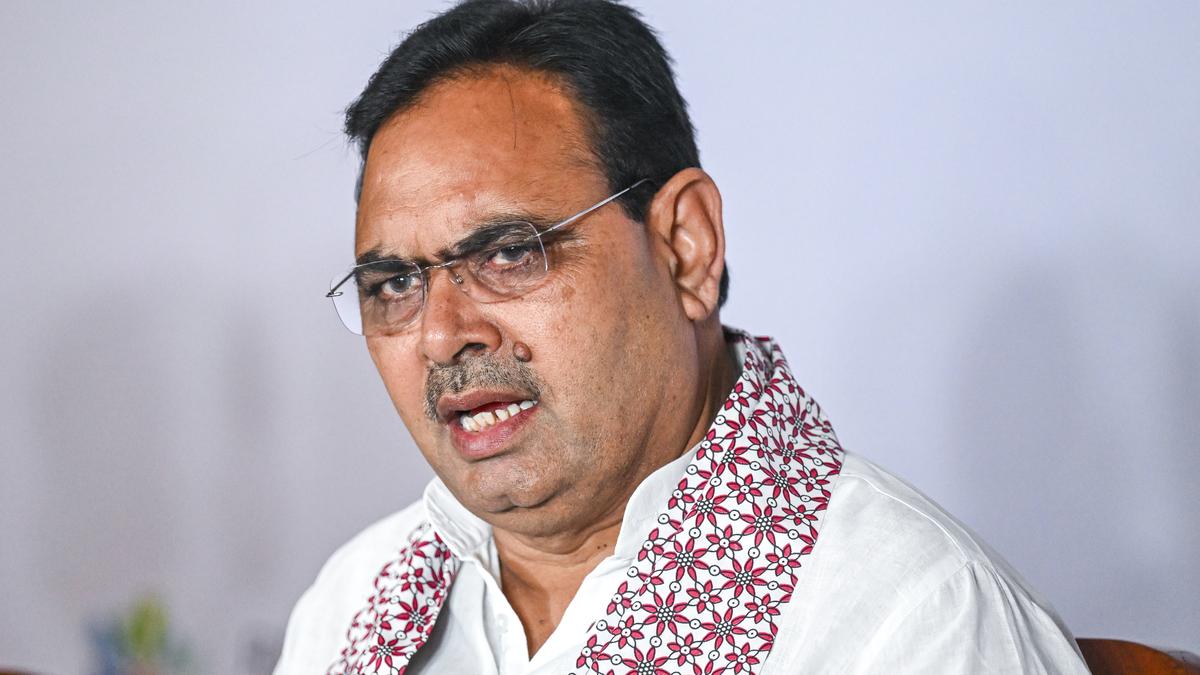When Christophe Jaffrelot, French political scientist and Indologist, submitted the manuscript of his new book, Gujarat Under Modi, in 2013, he was asked to delete so many passages he decided not to go ahead with it. He had done intense ground research, and held on to the book, replete with insights into the rise of Narendra Modi from Gujarat to New Delhi, till it could reach readers in 2024. “Gujarat was the blueprint for post-2014 India,” he says in an interview with The Hindu. Edited excerpts:

Survivors look at the photographs of Godhra riots victims, in Ahmedabad. | Photo Credit: Reuters
You call ‘Gujarat Under Modi’ a “political biography of an Indian state through the personality and actions of its most resilient ruler.” Is resilience the word to describe Modi today?
I used this word to remain on a purely descriptive mode but the book makes it clear that ‘resilience’ is only one of his characteristics. And it is not unique: Jawaharlal Nehru and Indira Gandhi have been even more resilient! If we look for more qualities, we would use other adjectives, charismatic, communal, populist, authoritarian, etc.
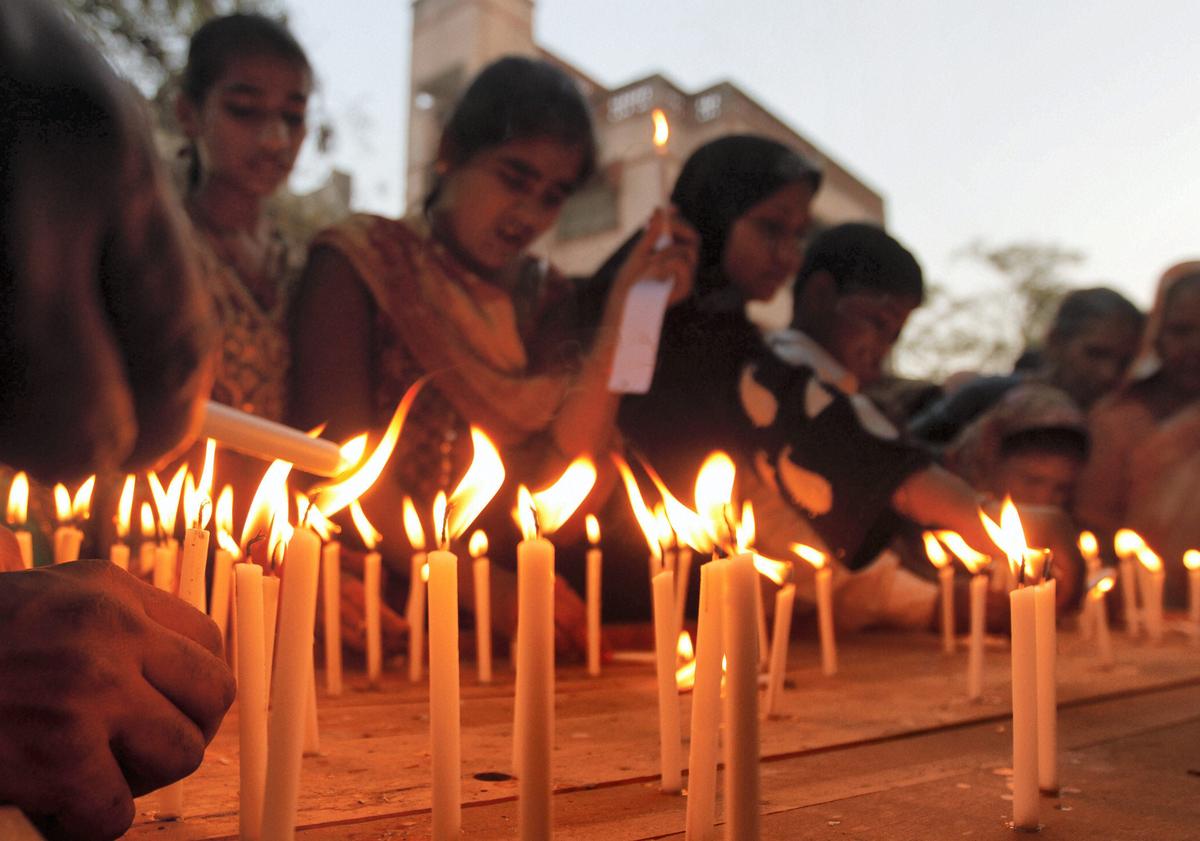
Muslim women light candles on the anniversary of the Godhra riots. | Photo Credit: PTI
He came to power with the promise of bringing the Gujarat model to Delhi. How far has he succeeded? And what has India gained from it?
He did, but the Gujarat model is not what people think it is. Modi has been able to scale up the politics and policies he had initiated in Gujarat to the national level: this is what the book is about; hence the subtitle [in some editions], ‘Laboratory of today’s India’.
The four mainstays of his strategy in Gujarat have remained the same: communal polarisation, the capture of institutions (including the police and the judiciary), the making of a new kind of crony capitalism conducive to jobless growth as well as inequalities and, of course, Moditva, a specific kind of high-tech communication-based national populism. This is the Gujarat model that has been ‘nationalised’ after 2014.
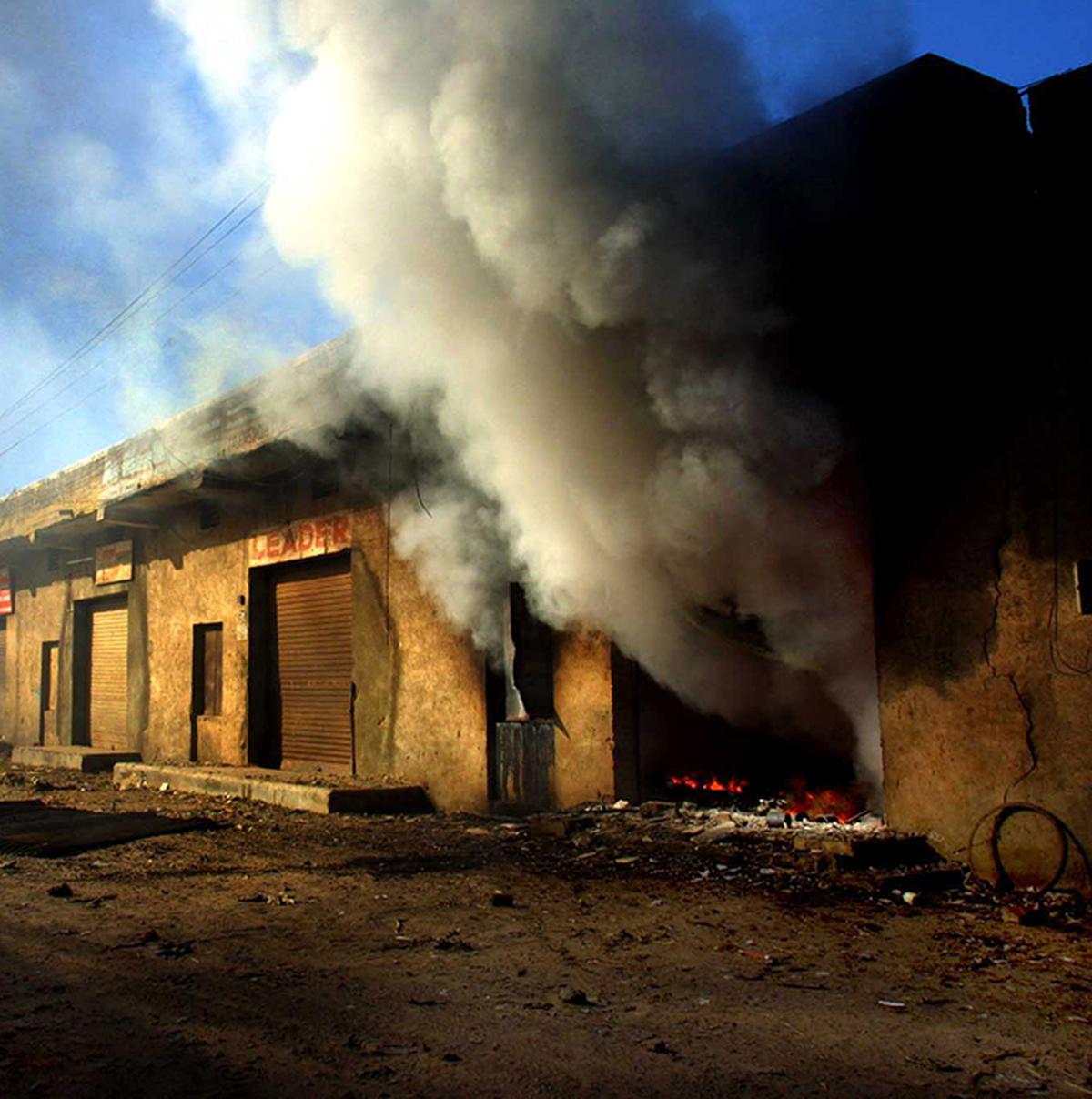
Buildings on fire during the Hindu-Muslim riots in Gujarat in 2002. | Photo Credit: AP
You talk of communal polarisation as Modi’s primary weapon in Gujarat 2002. By 2024, hasn’t polarisation given way to open hatred towards India’s minorities?
Polarisation is a political strategy. Certainly, attacks on minorities rely on emotions — fear and hatred are key concepts here. But they are not an end in themselves: they are instrumentalised for creating a majoritarian Hindu vote bank. That was obvious in 2002 when communal violence was intended to prepare the ground for an electoral wave — this is why Modi dissolved the Assembly and insisted on holding elections in spite of the large number of people who had fled their village or their neighbourhood. And it worked. Similarly, during the 2024 election campaign, what was the objective of the stigmatisation of the minorities? It was to exacerbate fear and anger for consolidating the Hindu vote. If the BJP leaders promote hatred, it is not only because they hate the minorities, it’s also because disseminating hatred helps them to polarise the electorate. This pattern replicates those of the racists in the West.
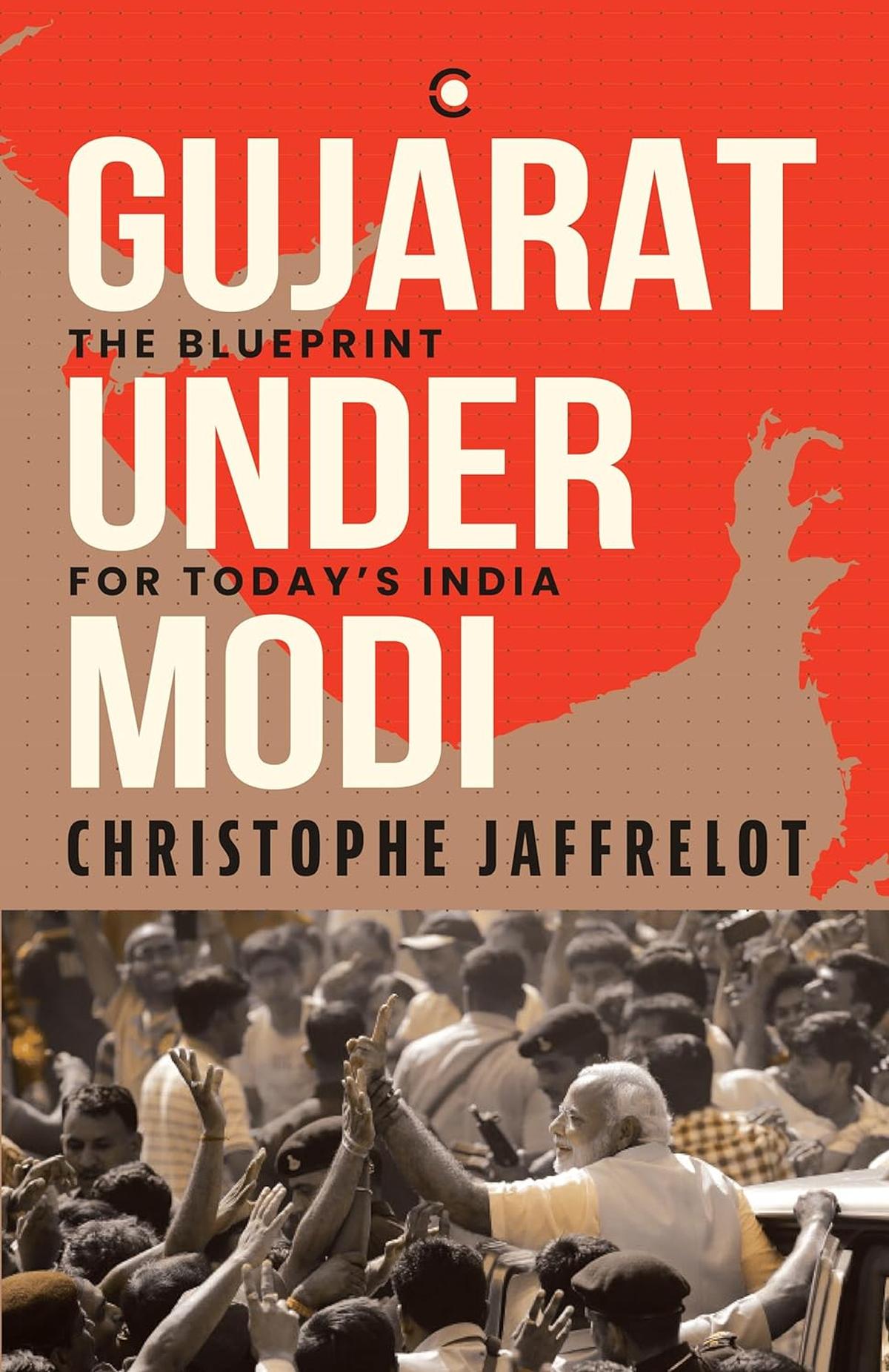
In the Rashtriya Swayamsevak Sangh, the individual is secondary to the organisation. How was Modi able to turn it on its head while apparently imbibing the RSS emphasis on a hierarchy?
Modi, a pure product of the RSS, started to have an uneasy relation with the organisation soon after the 2002 elections. He tried to emancipate himself from the Sangh, and started to relate directly to the people, the populist way — hence his use of the social media, PR firms, spin doctors like Prashant Kishor, etc.; he did not report to the Prant Pracharak but built a parallel power structure instead and, even more importantly, a personality cult. Yes, this modus operandi stood in contrast with the ethos of RSS, an organisation where personalities had to disappear, to merge in the organisation. But what could the RSS leaders do: Modi said aloud what they only dared to whisper, he was fully in tune with their agenda, he was very popular among the swayamsevaks and who else could win the elections in the BJP?
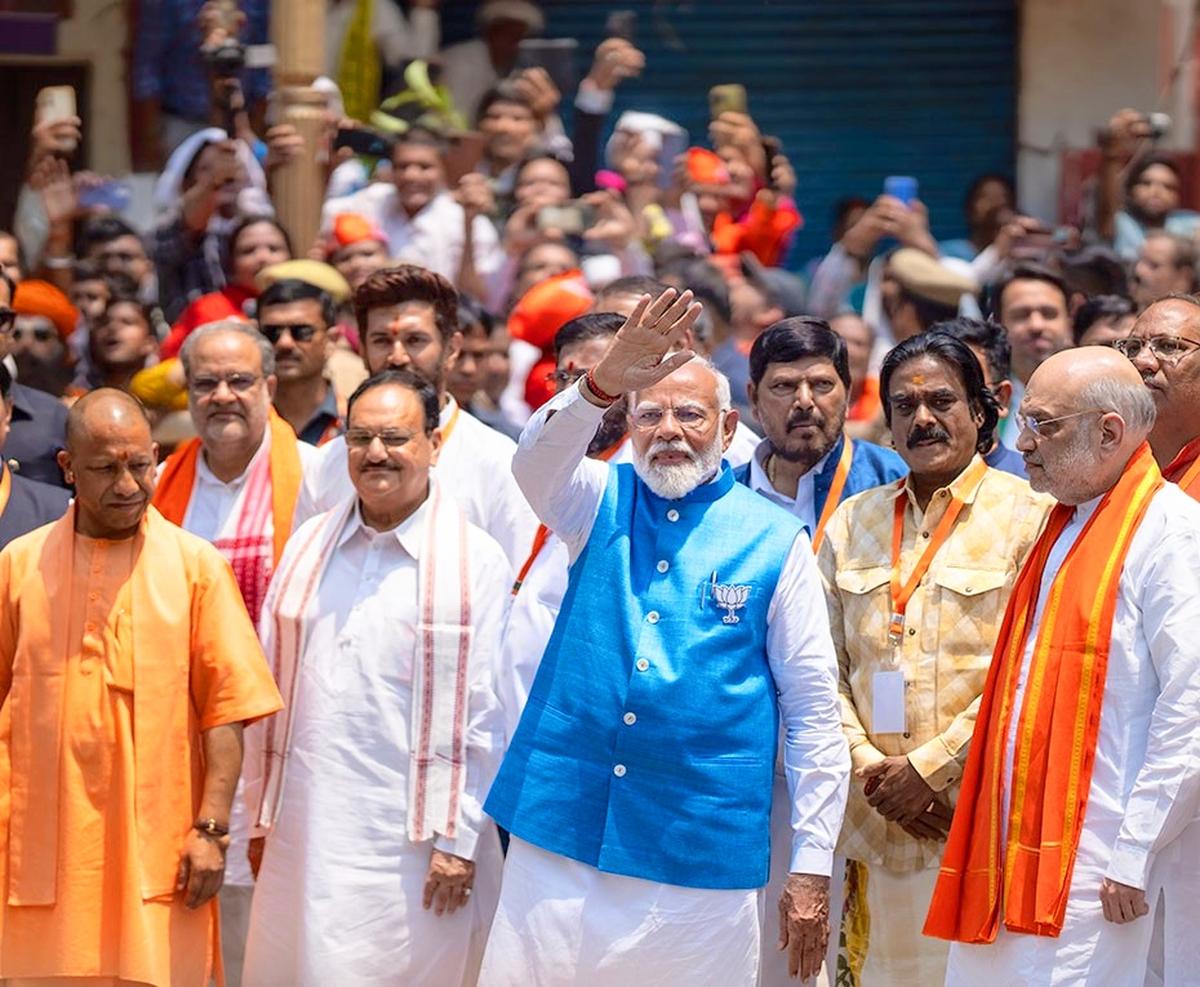
Prime Minister Narendra Modi along with party leaders, in Varanasi. | Photo Credit: Getty Images
Talking of his economic policies, how do you look at Modi’s move away from say, health and education, to development of ports, roads and airports?
Two chapters deal with political economy issues precisely because his policies in this domain should not slip under the radar. The first one analyses the way he related to big business. While Gujarat was well known for its entrepreneurs, Modi promoted mega projects at the expense of small and medium enterprises. A new nexus took shape, formed by him and half a dozen of cronies, who got land at a low price, 0.1% interest rate loans and tax free as well as labour laws free-SEZs in exchange for the funding of expensive election campaigns. I demonstrate that the promotion of mega projects (including infrastructure like roads and energy production) was conducive to jobless growth because of their capital-intensive character. Despite its high per capita revenue, Gujarat under Modi (and since then) has not invested in education, health and anti-poverty schemes. Hence, inequalities deepened, fostered by pro-rich policies.

The Sudarshan Setu, connecting Okha mainland and Beyt Dwarka. | Photo Credit: ANI
You started working on this book around 20 years ago. What explains the long gestation period?
I went to Gujarat for the first time in 2001, after the earthquake, and visited the State twice or thrice a year till 2020. By 2013, the manuscript was ready. But no Indian publisher was prepared to publish it. The publisher who had bought the rights asked me to cut every alternate sentence, following the recommendations of the legal advisers. I preferred to do something different: the book on the Emergency (India’s First Dictatorship: The Emergency, 1975-1977) and Modi’s India. Then I returned to Gujarat under Modi with an additional objective: I could now show that Modi had conceived and experimented what we are seeing in India since 2014 when he was in Gujarat. Never before had a regional leader upscaled a provincial political strategy to such an extent successfully — this book is about this terrible tour de force.
Today, many institutions, including the police, bureaucracy and the media, stand compromised. Is Modi to blame? There are strong constitutional safeguards in place.
Certainly, bureaucrats, lawyers, policemen, journalists could be more courageous. The situation would be different if spinelessness and self-censorship were not so widespread. That said, to resist is quite a task when the state resorts to the worst form of authoritarian practices at the expense of the rule of law. This is something Modi and Amit Shah have experimented in Gujarat first: they have used pretexts for sending to jail the policemen and the bureaucrats who had done their job during the pogrom, they have twisted the arms of the lawyers, they have cut to size their political opponents, including those who tried to offer an alternative within the BJP, including Keshubhai Patel whose misfortune was repeated in the case of L.K. Advani a few years later: Gujarat was indeed the blueprint for post-2014 India.
Gujarat Under Modi: The Blueprint for Today’s India; Christophe Jaffrelot, Westland Books, ₹899.
ziya.salam@thehindu.co.in


